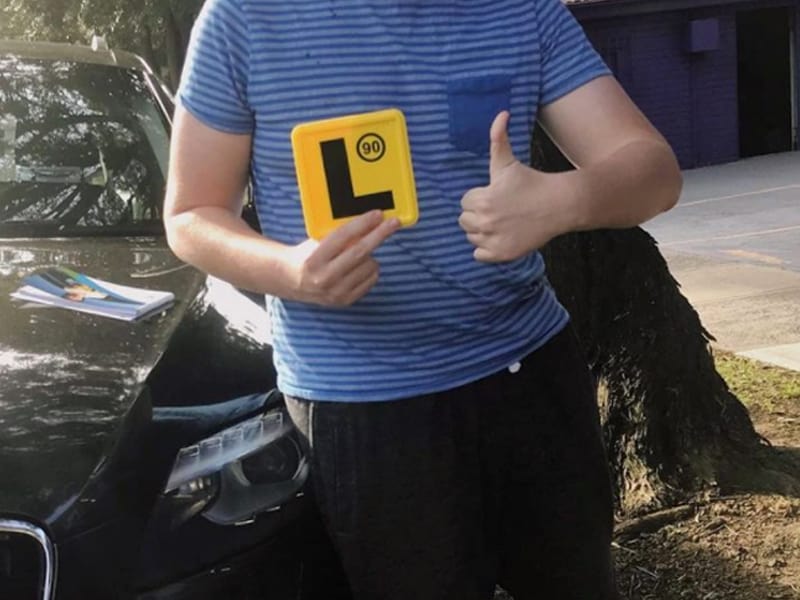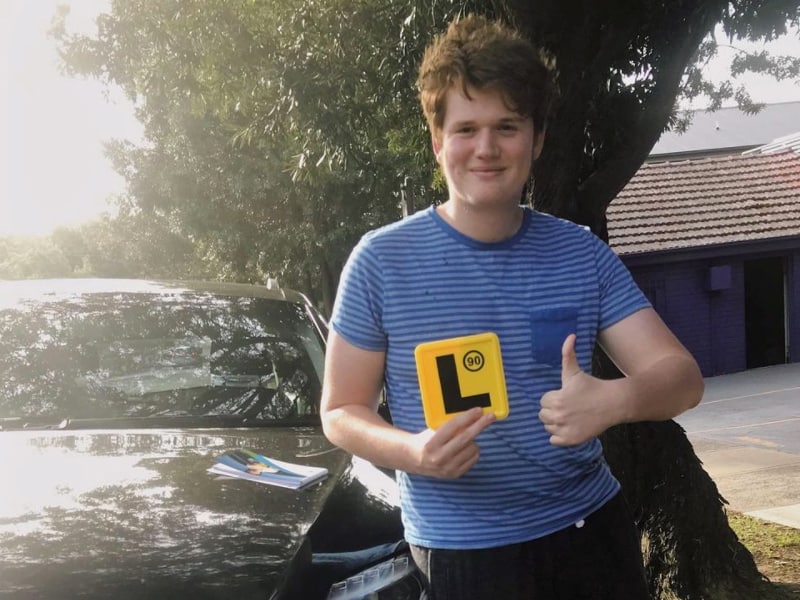Just when you think you can relax a little bit, they go and give your kid a license. Yup, it’s time to teach your teen to drive and… well, buckle up tight!
Look, I can’t lie, having to teach your teen to drive may well be the most stressful thing you ever do. I’m not even kidding. Witness a conversation I recently had with my 16-year-old:
Teen: ‘Mum, can we go for a drive?’
Me: ‘I don’t think so, I’ve had a hard day and I’m stressed enough as it is.”
Teen: ‘Um, excuse me, why would it be stressful for you? I’m the one driving!’
Dear god. They really don’t get it do they? Maybe one day they will experience what it feels like to be in the passenger seat of a car that is being driven by someone who cannot actually drive. But not today.
Today, it’s your job to teach your teen to drive and you are understandably petrified. Let me try to ease your fears a little bit with these tips I’ve picked up along the way. Godspeed, parents everywhere. Godspeed.
How to teach your teen to drive
1. Lay down the car laws
Right from the very first moment in the car, lay down the law. Not just the road rules, either. These are the laws that are going to get your teen and you through the learner driver days without (gulp, literally?) killing each other. These are a few of our car laws:
Be a respectful learner – don’t talk back, don’t assume you know anything, be grateful your parent is here at all.
Stop means stop NOW – like, really, truly STOP means now, not ‘in a minute’.
Keep a calm mind – it’s okay to be stressed, but yelling or carrying on is not allowed.
Break any of the car laws (or the road rules) and you’re pulling straight over. Mind the gutter! GUTTER!
2. Know the road rules
Ahem, just quietly, it pays to brush up on the road rules yourself before you take your teen out there. You may be surprised to find out what you think you know, but don’t actually know. Roundabout indication, anyone?
Just remember, your teen has only recently passed a quiz on all things road rules, so they know stuff you might have forgotten. Don’t be that parent.

3. Get the professionals in
We live in the city, so it was really stressful letting my teen drive at any time after 5am and before 11pm. Joking, but almost not. It’s all well and good to tool around a few quiet blocks, but quite a different story when traffic gets involved. I found that booking my teen in for some professional lessons was the best thing for us.
The instructor (who, might we just mention, has their own brake pedal!) was able to teach Max how to merge into traffic, how to manage at traffic lights and all the other harder stuff. He’ll be back soon to learn the fundamentals of reverse parking…
4. Muster calm patience
If you want to teach your teen to drive, you’ve got to teach yourself lots and lots of patience first. LOTS. Presenting a calm, easygoing air is going to help keep your kid calm and in control. Learning to drive is very stressful and the last thing your teen needs is you screaming about the traffic, clutching at the hand rail or panicking at any time. Yes, it’s very hard to stay calm and considered, but it’s the trick to getting through.
5. Talk them through it
I found in the early days that keeping up a calm commentary about what was coming up next was an excellent strategy. “We’ll be coming up to the roundabout shortly, be ready to look to your right, give way to traffic on the roundabout to your right, indicate left when we leave the roundabout…” etc.
Deliver your instructions in a low, measured tone. “Turn left at the next left turn”, “Give way at the intersection, looking both left and right for any traffic”, “I want you to pull over as soon as you feel comfortable to do so”, and so on.
6. Think like a pilot
Every time a pilot begins a flight, she goes through a set checklist to ensure everything is ready to go. The same should be true when you teach your teen to drive. Getting into the habit of checking that the mirrors are well positioned, the chair is in a comfortable position, there’s enough petrol for the journey, and so on, is good practice. In addition, they need to get in to the habit of always indicating, then checking their mirrors, then their blindspot before pulling away from the kerb.

7. Ask around for safe routes
There will be good spots near your home to take a newbie, so ask around. Your neighbours or other school parents will know the best places to go. A lot of areas that are busier during the day are nice and quiet at night or on weekends, so that’s a good time to go to get started.
Empty carparks on weekends are great for learning the basics, the same goes for industrial estates on Sundays and weekend touristy spots during weekdays.
8. Every minute counts
Getting the 120 hours up can be daunting at first (and it is), but within no time your child will be confident enough to do a bit of ‘everyday driving’. That’s when the hours really start to rack up. Twenty minutes here, 10 minutes there, it all gets fed into the app and goes towards the necessary hours. It sure beats heading out of town for an hour-long drive on the weekend. Instead, they’re doing a couple of hours every week just doing the regular pick ups and drop offs.
Don’t forget the Safer Driver Course (NSW – there will be one for your state too). Once your child has done 50 logbook hours with some night driving, they can do the course. The course gets them a bonus 20 hours in their logbook. Which means that instead of 120 hours, you’ll only need to rack up 100 hours as you teach your teen to drive. The course costs $140 and you can check if there is one near you here.
9. Little things matter
I think they may teach it differently in drivers’ ed these days, but I always learnt that the hands should be at 10 and two o’clock on the steering wheel. Also that you should always check your blind spot, be able to just see the sides of your own car in your side mirrors, and that you squeeze the brake, not push.
Things like that are things you never forget, so have a think about the things you would like your child to always remember during their driving days.
10. Drive your own drive
When your kid is behind the wheel, stressing to the max, having some moron tailgate them because they want them to speed up is infuriating. Grrrr. Just stop. As much as you feel the blood rise, though, keep it from your teen. Instead, just remind them that they have L plates on, they are allowed to be as slow as they like, it’s the other driver’s problem, not your learner’s.
The same is true when, for example, you might accidentally find yourselves driving up a mountain in a busy tourist area with nowhere to pull over and a line of cars impatiently following behind. Those hairpin bends sure are tricky for someone who’s only been for two driving lessons… whoops.
“Just wave and smile, Max, wave and smile.”
Have you had to teach your teen to drive yet? Seriously, I reckon the only thing more stressful is going to be watching them drive off without you on their Ps!!! !!!!!!!!!!!!!!!!!!!!!!
Feature image by Maxabella – yep, that’s Max; girl image licensed from Deposit Photos

